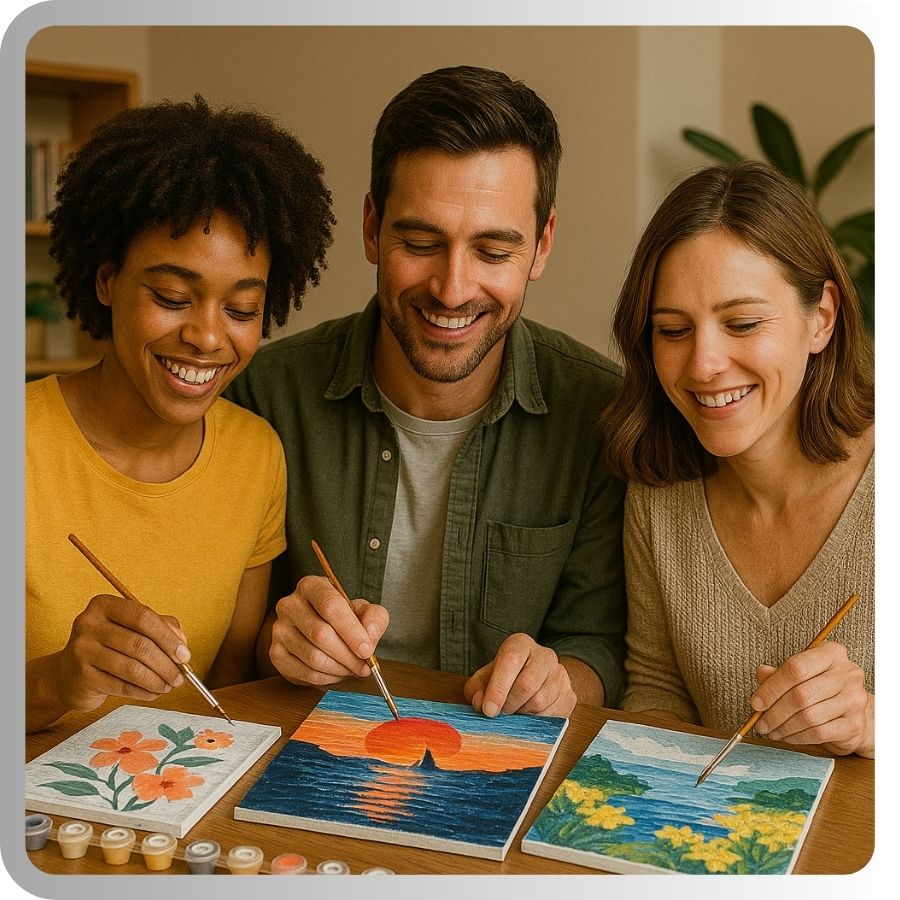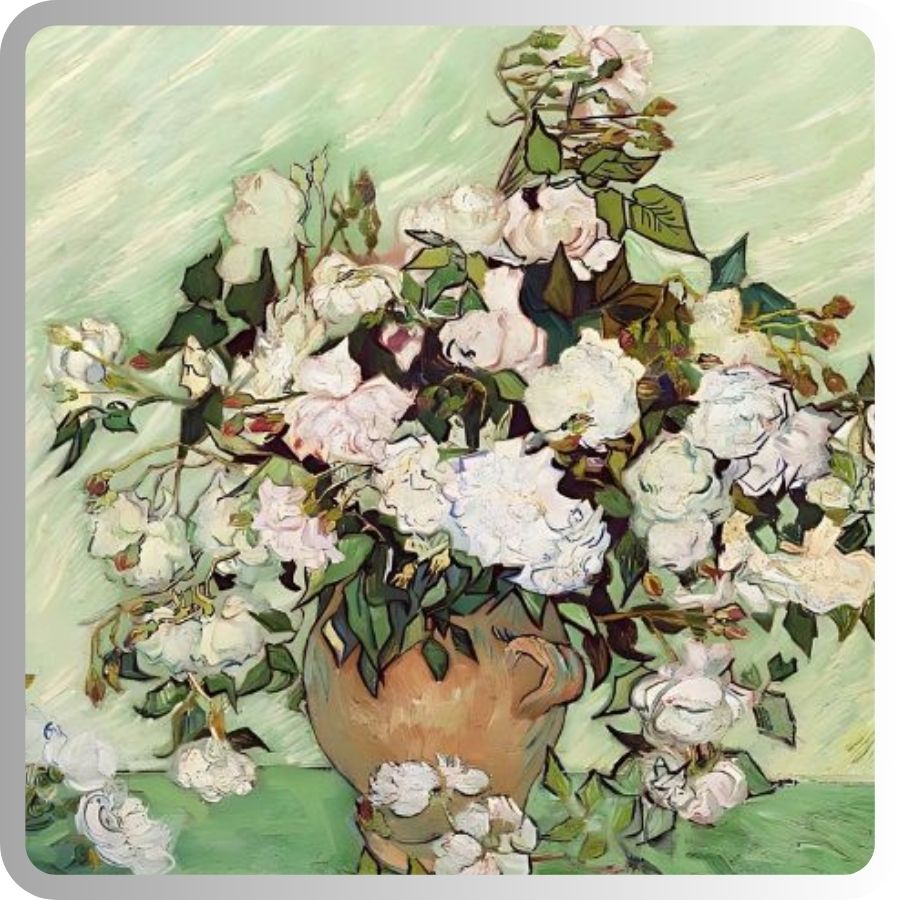Is your paint by numbers kit gathering dust due to dried-up paints? Don't worry; we've got you covered! In this article, we'll explore some practical tips to revive your artistic tools and get those colors flowing again.
There's nothing more frustrating than discovering that your paint has dried up just as you're ready to continue your artowrk. But fear not! You won't lose your easy paint by numbers kits, there are simple steps you can take to bring your dried paints back to life and keep your painting projects on track.

Don't let dried-up paints dampen your artistic spirit. Let's revive your paint by numbers kit and get back to creating vibrant artwork. Follow the simple tips in this article, and soon you'll be back in the process of creating beautiful paintings once again.
Why is my acrylic paint dried out or hard?
Are you wondering why your acrylic paint has dried out or become hard? In this section, we'll uncover the common causes behind this frustrating issue and give youeffective ways to fix dry paint and prevent it from happening again.
One possible reason for dried acrylic paint is exposure to air or a high temperature. If the paint containers aren't tightly sealed after each use, air can dry out the paint, resulting in a thin, hardened surface. Make sure to seal your paint containers properly to maintain the paint's freshness.
Inadequate storage or high heat could also contribute to the drying out of paint. Acrylic paints are sensitive to extreme temperatures and low humidity, causing them to dry more quickly. Store your paints in a cool, dry area away from direct sunlight and heat sources.
Insufficient mixing before use is another cause. Make sure to stir your paints before each session to keep the pigments and binders evenly mixed. For best results, store your paints in an airtight container to reduce evaporation and keep them fresh.
Preventing paint from drying out is key. By sealing your containers properly, storing them correctly, and mixing them thoroughly, you can extend the life of your acrylic paints. Keep creating, and if you need extra paints, contact us here for assistance.
How to Tell That an Acrylic Paint Has Gone Completely Bad
Let’s explore the signs that indicate acrylic paint has gone bad. While acrylic paints have a long shelf life, they can eventually spoil or deteriorate over time. Here are some indicators to watch out for:
-
A strong, unpleasant odor: If your acrylic paint smells bad, it’s a clear sign it has spoiled. Trust your sense of smell!
-
Mold or discoloration: When mold or unusual discoloration appears on the surface of your acrylic paint, it's a sign of spoilage. It's time to say goodbye to that jar.
-
Separation or curdling: If your acrylic paint appears clumpy or has separated into layers that cannot be easily mixed back together, it has likely gone bad.
Using spoiled paint or dry acrylic paint can affect the outcome of your project. It’s best to replace expired paints for optimal painting results. It's better to be safe than sorry and invest in fresh paints for optimal results.
Now, here's a light-hearted joke to end on a humorous note: Why did the artist bring a ladder to the art exhibition? Because they wanted to reach new heights in their creativity!
Keep exploring your artistic journey, and if you need any further assistance or information, don't hesitate to reach out. Happy acrylic painting!
Keep a Cup of Water Next to Your Painting
Can you reactivate acrylic paint with water? You'll need no special skills for this. Having a cup of warm water within reach while working with acrylic paints can be extremely helpful. Here's why:
-
Dilute acrylic paint: If you find your paint is too thick or needs to be thinned out, dip a small toothpick into the cup of water and gradually add a drop or a few drops of water to the paint to achieve the right consistency. Too much water would change consistency to a watery state which don't want to achieve. If this doesn't help as the paint is too hard, let a little water overnight.
-
Prevent paint from drying: By dipping your brush in the water between strokes, you can keep the paint from fully drying on the bristles, allowing for smoother application.
Now, here's a light-hearted joke for you: Why did the painter bring a cup of water to the art class? Because they heard it was thirsty work!

Remember to keep a cup of water handy while painting to ensure moisture and the smooth flow of your artistic process.
Using Flow Aid (Flow Improver)
In this section, we’ll discuss how flow aid can help improve your paint by number kits. Flow aid is a helpful tool that can assist in achieving the right consistency and flow of your acrylic paint. Here's how it works:
-
Rehydrate acrylic paint: If your acrylic paint has become dry or thick, adding a few drops of flow aid can help rehydrate it, making it easier to work with.
-
Extend the working time: Flow aid slows down the drying time of acrylic paint, giving you more time to work and blend colors on your canvas.
-
Improve flow and leveling: By adding a small amount of acrylic flow improver to your paint, you can enhance its flow and achieve smoother strokes of the brush.
It's important to note that while flow aid can improve the performance of your fully dry acrylic paint, it does not make expired or spoiled paint usable. If your acrylic paint has expired or shows signs of deterioration, it is best to replace it with fresh paint from us. Just let us know via our contact form and we'll get you some new fresh paints.
Now that we've covered the benefits of using flow aid, let's dive into the next chapter and explore more techniques to enhance your acrylic painting experience.
How to prevent acrylic paint from drying out?
Some tips to prevent your acrylic paint from drying out too quickly. By following these simple steps, you can ensure that your paint stays workable for longer periods:
-
Color One Number Only at a Time: When working on a paint by numbers project, focus on one numbered area at a time. This way, you can minimize the exposure of other colors to air and prevent them from drying out prematurely.
-
Putting a small amount of paint on the palette: Squeeze out only the amount of paint you need for each section on your palette. This prevents the paint from drying out before you finish using it.
-
Dealing with hard acrylic paint: If you encounter dry or hardened paint, you can try rehydrating it by adding a little water or acrylic medium to the palette and mixing it well with the dried paint. This can help restore its consistency.
-
Don't forget to return the caps of tubes and containers
By following these tips, you can keep your acrylic paints in a workable state for longer and enjoy a smooth painting experience. Remember to clean your brushes and palette thoroughly after each session to maintain the quality of your materials. Any leftover paint or old paint can be used after a long time if stored in a closed container and in a proper temperature.
Did we help you recover some of your dry paints?
We hope you found this information useful! Our team is always here to assist you in your creative projects.
Want to get some tips on which Paint by numbers kit to start your painting journey with? Well, we always recommend selecting one of the Famous Paintings Paint by numbers, as they are all well-known artworks painted by the world's most famous artists. Especially Van Gogh Paint by numbers kits are so popular.
If you're an animal lover, then our Animal Paint by numbers will make you happy.




